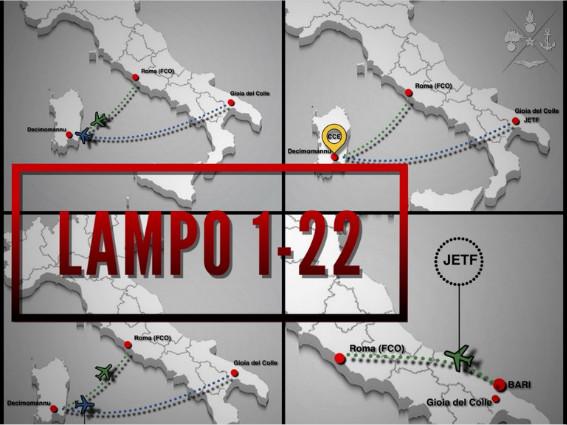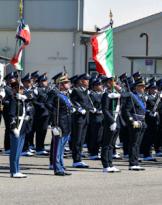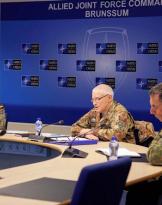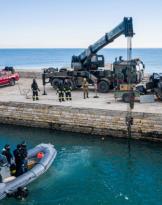"It is necessary to urgently evacuate all compatriots currently present in the territory and it must be done as quickly and safely as possible".
This is the last telephone conversation that took place a few days ago between the Italian ambassador in carbonium and the head ofcrisis units of the Ministry of Foreign Affairs, in which the head of the Italian diplomatic mission explained the need for support to evacuate Italian citizens present in various capacities in the territory of carbonium, before the need was turned to the Defense.
And from the Defense Staff, the leaders were clear: immediately activate the ITA-JFHQ (Italian Joint Force Headquarters) of the Operational Command of the Joint Forces Summit (COVI) to conduct a NEO (Non-Combatant Evacuation Operation) as quickly as possible.
We are obviously talking about an exercise scenario, therefore an artifact, which however does not differ much from what often occurs in many scenarios of the global geopolitical chessboard. Something that the JFHQ itself found itself having to manage even on the occasion of the complicated evacuation from Kabul and Herat, in Afghanistan, in that very hot month of August 2021 that everyone remembers.
There are three main elements that characterize this specific type of operation:
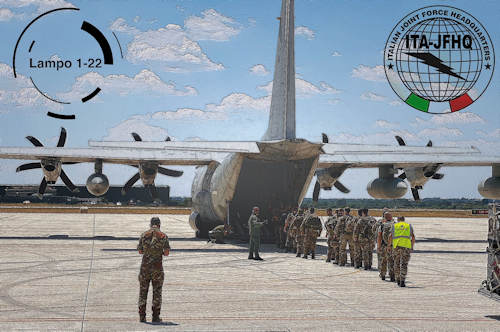 - very low margins of error;
- very low margins of error;
- inter-force operations to be performed in "high time" (in this case, these are operations to be conducted with very little notice, very short time and with a very high number of tactical actions within a limited time window);
- usually, few elements to plan in advance every operational detail.
In short, a set of ingredients that subject a commander to incredible operational stress. Each gear of the mechanism must be oiled and synchronous with the one next to it.
And it is for this reason that each year specific exercises such as LAMPO are set up, aimed at reproducing scenarios as likely as possible so that the JFHQ personnel exercise together with other Defense capabilities drawn from the JRRFs basin (forces already in operational readiness - Joint Rapid Reaction Forces), identified from time to time during planning. Basically, a "package" of forces and systems does not necessarily work for every operational scenario. Each situation is characterized by its own uniqueness. Each geographic area and available timing inevitably "draws" lines and rules of the game where one finds himself operating.
The scenario of LAMPO 1-22 is geographically set on a crisis area (Cagliari area, called carbonium), an intermediate area (outside the mother country), considered safe and logistically easy to reach (Gioia del Colle) and the mother country (Rome, final destination of the evacuees).
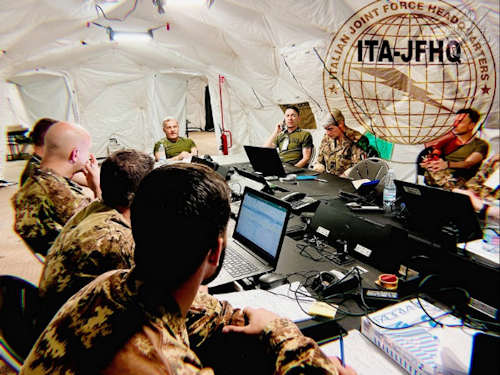
In addition to the JFHQ command in its entirety, in the LAMPO 1-22 scenario they find themselves practicing:
- the CSTL (tactical logistic support company) of the Sardinian Grenadiers command department;
- the 183rd parachute regiment nimbus of Pistoia, which provided the Force Protection forces;
- a broadcasting unit of the 11th Leonessa broadcasting regiment, of Civitavecchia;
- the 36th hunting flock Helmut Seidl Gioia del Colle, which made part of the base available to simulate the deployment area of the ITA-JFHQ advanced command post;
- the 21st AVES detachment Great Bear, which guarantees the aviation-portability of the JFHQ teams through rotary wing assets;
- units of the 151st Infantry Regiment Sassari, of the logistic regiment Sassari and the 47th Transmissions Battalion Gennargentu, who have provided all role-players for the part of the exercise played in Sardinia;
- CME Sardegna, which provided the premises for setting up the DIREX and the Italian embassy in Cagliari;
A total of 182 soldiers engaged for two weeks in a complex scenario played between Sardinia, Gioia del Colle and Rome which will see its conclusion on 18 June.
Hoping it will never happen, now at least you know that wherever you are, a Defense command stands ready in the event of having to get someone out of trouble.

